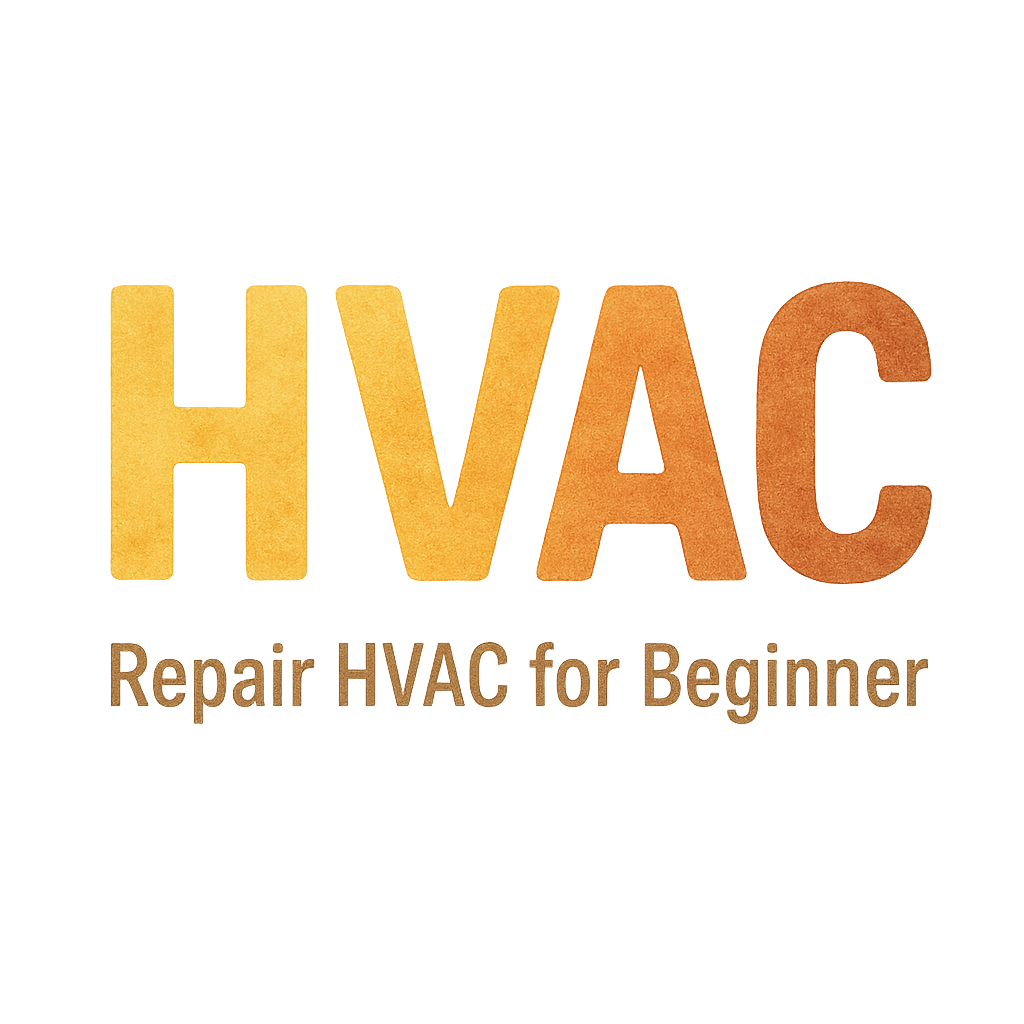Introduction to HVAC Systems
In modern homes and businesses, HVAC (Heating, Ventilation, and Air Conditioning) systems are essential for maintaining comfort and indoor air quality. These systems rely on several components that work together seamlessly. Understanding the function of each HVAC component helps not only in maintaining comfort but also in ensuring the system runs efficiently and lasts longer. If you’re new to HVAC, check out this basic guide for a deeper dive.

What is HVAC?
HVAC stands for Heating, Ventilation, and Air Conditioning. These systems are responsible for regulating temperature, air quality, and humidity inside buildings. HVAC systems play a key role in ensuring that a space is comfortable for living or working.
Why Understanding HVAC Components is Crucial
Knowing how HVAC systems work can save you money and prevent costly repairs. When you understand each component’s function, you’re better prepared to maintain the system properly and troubleshoot minor issues before they escalate into major problems. For troubleshooting tips, refer to our HVAC Troubleshooting page.
1. The Furnace: Heart of the Heating System
A furnace is the core of the heating function in most HVAC systems. It generates heat, which is then distributed throughout the building.
What is a Furnace?
A furnace is a heat exchanger that heats air and then distributes it through a system of ducts to maintain a warm indoor environment during colder months. To ensure your furnace is running smoothly, consider reading our furnace maintenance checklist.
Key Functions of a Furnace
- Heating the Air: The primary function of a furnace is to warm up the air using either natural gas, electricity, or oil.
- Air Distribution: After heating the air, the furnace pushes the warm air through ducts to various rooms in the building.
- Regulation: Furnaces work in conjunction with thermostats to maintain a desired temperature.
Types of Furnaces
- Gas Furnace: Most common in residential settings. It burns natural gas to produce heat.
- Electric Furnace: Uses electrical heating elements to warm the air. They are ideal for homes without natural gas lines.
- Oil Furnace: Uses oil as fuel and is often used in areas where natural gas isn’t available.
Furnace Maintenance Tips
Regular maintenance can keep your furnace running efficiently. Here are some tips:
- Change the air filter regularly.
- Schedule an annual inspection by a professional HVAC technician. For more maintenance tips, check out our maintenance cleaning guide.
- Clean the furnace’s blower and check for any gas leaks.
2. The Air Conditioner: Cooling Your Space Efficiently
When temperatures soar in summer, the air conditioner becomes the savior of comfort. It helps regulate indoor temperature by cooling and dehumidifying the air.
How Does an Air Conditioner Work?
Air conditioners work on the principle of heat exchange. The system absorbs the heat from inside the house and releases it outside. It uses refrigerants like Freon to facilitate this process.
Essential Components of an AC System
- Compressor: Compresses the refrigerant gas and sends it through the condenser.
- Evaporator Coil: Absorbs heat and moisture from the indoor air.
- Condenser Coil: Releases heat from the refrigerant outdoors.
- Expansion Valve: Regulates the flow of refrigerant into the evaporator.
AC Maintenance and Troubleshooting
Regular AC maintenance ensures longevity and prevents costly breakdowns. Here are a few tips:
- Replace the air filter every 1-3 months.
- Clean the condenser coils to ensure proper heat dissipation.
- Check for refrigerant leaks and call a professional for refills. Need help? Visit our repair page.
3. The Heat Pump: Year-Round Climate Control
Heat pumps are unique in that they provide both heating and cooling, making them a versatile option for many homes.
What Makes Heat Pumps Different?
Heat pumps work by transferring heat rather than generating it. In winter, they extract heat from the outside air and bring it inside. In summer, they reverse the process and release heat outdoors.
Functions of a Heat Pump
- Heating: Heat pumps can extract warmth from cold air and release it indoors.
- Cooling: By reversing the flow of refrigerant, a heat pump can cool your space during warmer months.
Heat Pump Maintenance
- Clean or replace filters regularly to maintain efficiency.
- Schedule an annual check-up to ensure the system is working correctly. Check our maintenance cleaning services.
- Check the outdoor unit for any debris or obstruction.
4. The Thermostat: Managing Comfort
The thermostat acts as the control center of your HVAC system. It allows you to set the desired temperature and maintains it by regulating the heating and cooling processes.
How Does a Thermostat Control HVAC Systems?
The thermostat detects the ambient temperature and compares it to the set temperature. When a discrepancy is found, it triggers the HVAC system to either heat or cool the space.
Types of Thermostats
- Manual Thermostats: Simple, basic models that require manual adjustments.
- Programmable Thermostats: These allow you to set schedules for when the heating or cooling should turn on and off.
- Smart Thermostats: The most advanced models that can be controlled via smartphone apps and even learn your preferences over time.
Common Thermostat Issues and Fixes
- Incorrect Readings: If your thermostat is showing incorrect temperatures, check if it’s placed near heat sources or direct sunlight.
- Dead Batteries: For battery-powered models, dead batteries can prevent operation.
- Erratic Temperature Control: A professional calibration may be necessary if your thermostat is inconsistent. Need help? Check out our repair tips page.
5. The Ductwork: Distribution of Air
Ductwork is the system of channels that deliver conditioned air throughout the building.
What is Ductwork?
Ductwork consists of a network of metal or fiberglass pipes that carry air from the furnace or air conditioner to the various rooms in the building.
The Role of Ductwork in an HVAC System
Without efficient ductwork, even the best HVAC systems would struggle to maintain comfortable temperatures. Leaky or clogged ducts can lead to significant energy loss. Check out our HVAC diagnosis page to understand common issues.
Ductwork Maintenance and Common Problems
- Inspect ducts for visible damage or leaks and seal them promptly.
- Ensure vents are clear of debris to maintain optimal airflow.
- Insulate ducts in unconditioned spaces to reduce energy loss. Read more about ductwork issues.
6. The Air Filter: Ensuring Air Quality
An air filter plays a crucial role in maintaining the quality of the air you breathe. It traps dust, dirt, and other particles that would otherwise be circulated in the air.
Importance of Air Filters in HVAC Systems
Air filters protect your HVAC system from dust and dirt buildup, preventing damage to sensitive components and improving overall system efficiency. Learn more about filter problems.
Different Types of Air Filters
- Fiberglass Filters: Affordable and basic but not very efficient at filtering smaller particles.
- Pleated Filters: More effective at trapping dust and allergens.
- HEPA Filters: High-efficiency filters that trap very small particles, ideal for allergy sufferers.
How to Maintain and Replace Air Filters
Regularly replace air filters to ensure the system works efficiently. A clogged filter can reduce airflow, causing your HVAC system to work harder and increasing energy consumption. Check out our checklist for air filter maintenance.
Conclusion
HVAC systems are complex, but understanding their core components can make a world of difference in managing comfort and reducing energy costs. Whether it’s the furnace keeping you warm or the air conditioner keeping you cool, each component plays a vital role. Regular maintenance, proper care, and knowing how to troubleshoot simple problems can extend the life of your HVAC system. For a full list of maintenance tips, head over to our maintenance page.
FAQs
- What is the most important component of an HVAC system?
- All components are important, but the furnace and air conditioner are the primary ones that control heating and cooling. Learn more here.
- How often should I change my air filter?
- It’s recommended to change your air filter every 1-3 months, depending on the type of filter and usage. Find out why air filters matter.
- Can I maintain my HVAC system myself?
- Yes, simple maintenance tasks like replacing filters or cleaning the outdoor unit can be done by homeowners. Check out our DIY guide.
- Why is my air conditioner blowing warm air?
- This could be due to low refrigerant, a dirty filter, or a malfunctioning compressor. For more info, visit our troubleshooting page.
- How can I improve my furnace’s efficiency?
- Ensure the filter is clean, check the ducts for leaks, and schedule annual maintenance with a professional. Read more about furnace repair.
- What causes poor airflow in my HVAC system?
- Blocked or dirty filters, leaky ducts, or a malfunctioning blower fan could cause poor airflow. Learn how to fix these problems.
- Should I replace or repair my HVAC system?
- If your system is more than 10 years old and requires frequent repairs, it may be time for a replacement. For more details, visit our HVAC repair page.


